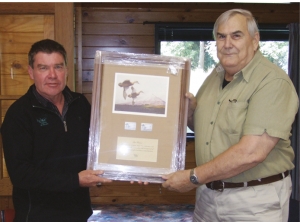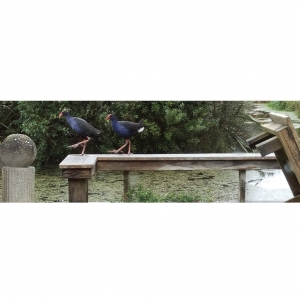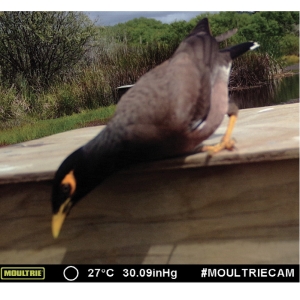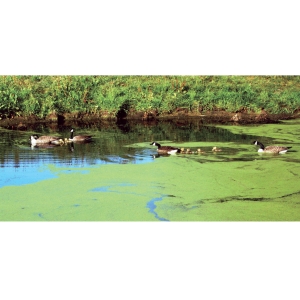Super User
Monday, 19 March 2018 06:23
Something about opening day
Rickie Cameron 10, Omamari, Kaipara.
“He has been out previously (not shooting), but never opening weekend.”
Rickie is David Cameron’s son. They live in Silverdale. “This was his first opening weekend and he was shooting with a Optima 410 single barrel shotgun and his trusty Ridgeline gear.
It was on private land, thanks to the local Omamari farmer.
Rickie loves to shoot clay birds, although with the 410 it isn’t that easy. Will move him up to a 20ga soon.”
Monday, 19 March 2018 06:19
Planting day at Ruffit Lodge
Fine weather was ideal for a ‘planting’ day at Ruffit Lodge (east of Woodville) mid May, with a few neighbours, friends and family mucking in to help.
160 trees were planted, with most getting the Don Bell ‘Growtector’ treatment. “This is the last section of our waterway to be fenced and planted. Just a few more flaxes and trees to go.” To encourage helpers Julie Candy offered soup and buns for lunch.
Published in
Issue 164
Tagged under
Monday, 19 March 2018 06:13
QSM recognition for DU's first president Ian Pirani
Ian Pirani received a Queens Service Medal (QSM) in this year’s Queen’s Birthday honours for services to conservation.
In 1974 Ian was a co-founder of Ducks Unlimited and was the first president of DUNZ through to 1980. During this time he and his wife Dawn initiated a Pateke breeding programme and nesting boxes for Grey Teal throughout New Zealand.
A former goat farmer who has given voluntary service to wetland preservation and other farm environment initiatives, Ian has contributed to conservation and the environment.
Early in his farming career Ian suggested to his employer to fence rather than drain a wetland. Later he and his wife established the largest water fowl collection in Australasia and were the first people to privately breed whio in captivity. He joined the Wellington Acclimatisation Society as a councillor in 1964, serving until 1972 and was a Councillor on the National Acclimatisation for three years.
He is a strong advocate for the profitable live harvest of feral goats from indigenous forests for environmental reasons and for use as a meat export. Ian has served on a variety of environmental and farming boards including the Meat and Wool Board as a member of the Goat Advisory Group, on the Eastern Fish and Game Board, Bay of Plenty Goat Farmers Association, the Department of Conservation East Coast Board, and the National Trust of Balance Farm Environment Board.
Ian was a senior assessor and on the management committee for the BoP Ballance Farm Environment Awards.
Ian has not been in the best of health lately, and DUNZ members wish him well.
Monday, 19 March 2018 06:05
Did You Know
Did You Know?
Ducks Unlimited was incorporated by Joseph Knapp, EH Low and Robert Winthrop in January 29, 1937, in Washington, DC, USA as a result of their concerns (and those of other sportsmen), about the loss of wetlands as habitat for waterfowl and the impact this would have on waterfowl hunting.
Ducks Unlimited Canada was incorporated in Winnipeg, Manitoba, Canada in March, 1937. Other chapters have since become operation in Latin America, Mexico, New Zealand and Australia.
Anti-hunting lobbyists have consequently had an historically difficult relationship with DU and accuse DU of simply breeding ducks to be shot.
It was waterfowl hunters intent on preserving their recreational interests who founded DU USA, and it remains a pro-hunting organisation. Supporters counter the anti-hunting lobby by pointing out that many species besides waterfowl live in the habitat restored and protected by DU. Wetlands improve the overall health of the environment by recharging and purifying groundwater, moderating floods and reducing soil erosion.
DU has become a leader in waterfowl habitat conservation and has conserved more than 12.8 million acres (46,900km²) of waterfowl habitat in North America.
DU USA partners with a wide range of corporations, governments, non-governmental organisations, landowners, and private citizens to restore and manage areas that have been degraded and to prevent further degradation of wetlands.
DU USA, in keeping with its founders’ intentions, also promotes the continuation of safe and regulated waterfowl hunting.
The majority of financial contributors and members are waterfowl hunters, and over 90 percent of those who read DU’s magazine are hunters.
Published in
Issue 164
Tagged under
Friday, 09 March 2018 08:56
Good news for good shots
A DUNZ member has provided the following information.
From a recent Council of Licensed Firearm Owners (COLFO) newsletter.
Please circulate and if you are not a member of COLFO and Sporting Shooters Association of New Zealand please consider joining. The bar stewards are not going to give up trying to take our hobby, sport and interests away from us:
A Win for Auckland Shooting Club and all NZ Shooting Ranges with financial assistance from Pistol New Zealand and COLFO, we are pleased to report that the Auckland Shooting Club has won its legal Battle with Auckland City Council to have its certificate of Compliance reinstated.
Auckland Council had revoked the certificate on the grounds of perceived lead contamination discharges to land and water.
If the Council stance had been upheld it could have heralded the end of shooting ranges in New Zealand.
This information has been provided by a DUNZ member.
From a recent Council of Licensed Firearm Owners (COLFO) newsletter.
Please circulate and if you are not a member of COLFO and Sporting Shooters Association of New Zealand please consider joining. The bar stewards are not going to give up trying to take our hobby, sport and interests away from us:
A Win for Auckland Shooting Club and all NZ Shooting Ranges with financial assistance from Pistol New Zealand and COLFO, we are pleased to report that the Auckland Shooting Club has won its legal Battle with Auckland City Council to have its certificate of Compliance reinstated.
Auckland Council had revoked the certificate on the grounds of perceived lead contamination discharges to land and water.
If the Council stance had been upheld it could have heralded the end of shooting ranges in New Zealand.
This information has been provided by a DUNZ member.
Published in
Issue 174
Tagged under
Friday, 09 March 2018 08:49
Wetlands of New Zealand
Ready to explore New Zealand – here are a few ideas of
places that might interest you – especially the wild life.
places that might interest you – especially the wild life.
Before human settlement (from around 12501300 AD), freshwater wetlands covered about 670,000 hectares of New Zealand. Now it is reduced to 89,000 ha – a loss of 90 percent. Fertile lowland swamps have been lost in greater number than those that were infertile or at high altitudes.
Wetland importance is often under-rated. Groups like our own DU Wetland Care and the national wetlands Trust are working towards reversing this trend. There is a great diversity of wildlife in our wetlands with more native birds, fish, invertebrates and plants than most other habitats, yet many wetland species are threatened with extinction Wetlands have high recreational values, and perform vital ecosystem services such as improving water quality and reducing flood risks. They have a big role in managing climate change. Healthy peat bogs are year-round sinks of 2–5 tonnes of carbon per hectare – locking it up in their soil indefinitely.
Wetlands are of cultural and spiritual significance to Maori. They provided Maori with food (particularly wildfowl, eels and other freshwater fish), taro cultivation, harakeke (flax) for weaving and other materials form medicinal, food, building, and craft use.
A plethora of wetland to visit
Farwell Spit – at the northern most tip of the South Island is one of New Zealand’s most important wetland areas. Pat of the spit forms a Ramsar Wetland site of significance and is an important staging area for migratory shorebirds on the East Asia – Australasia path. Farewell spit is just two hours from nelson. The area has been a wildlife sanctuary since the 1930s and its dunes are a haven for over 90 bird species.
Whangamarino
Whangamarino – 62km south of Auckland is the second largest bog and swamp complex in the North Island – another Ramsar site.
Wetland importance is often under-rated. Groups like our own DU Wetland Care and the national wetlands Trust are working towards reversing this trend. There is a great diversity of wildlife in our wetlands with more native birds, fish, invertebrates and plants than most other habitats, yet many wetland species are threatened with extinction Wetlands have high recreational values, and perform vital ecosystem services such as improving water quality and reducing flood risks. They have a big role in managing climate change. Healthy peat bogs are year-round sinks of 2–5 tonnes of carbon per hectare – locking it up in their soil indefinitely.
Wetlands are of cultural and spiritual significance to Maori. They provided Maori with food (particularly wildfowl, eels and other freshwater fish), taro cultivation, harakeke (flax) for weaving and other materials form medicinal, food, building, and craft use.
A plethora of wetland to visit
Farwell Spit – at the northern most tip of the South Island is one of New Zealand’s most important wetland areas. Pat of the spit forms a Ramsar Wetland site of significance and is an important staging area for migratory shorebirds on the East Asia – Australasia path. Farewell spit is just two hours from nelson. The area has been a wildlife sanctuary since the 1930s and its dunes are a haven for over 90 bird species.
Whangamarino
Whangamarino – 62km south of Auckland is the second largest bog and swamp complex in the North Island – another Ramsar site.
Managed by DOC, the 5,923ha of peat bog, swampland, mesotrophic lags, open water and river systems, is an important habitat for threatened species like Australasian bittern, grey teal, spotless crake, the North Island fernbird and black mudfish.
Firth of Thames
South of Auckland at the base of Coromandel Peninsula, the Firth of Thames has 8500ha of wide inter-tidal flats which attract thousands of migratory wading birds. Some make the arduous 10,000km journey south for the Arctic in spring and fly north again in the autumn; others fly1,000km north from the braided river systems of the South Island in the autumn and return in the spring.
Wairarapa Moana Wetlands
Park Lake Wairarapa, Lake Onoke and their associated wetlands make up the largest wetland complex in the southern North Island, supporting native plants and animals of national and international importance.
The diverse habitats within Wairarapa Moana attract a wide range of wetland birds – about 100 species including international migratory birds. The area is also a national importance to fisheries. Among 10 native species, which migrate between the sea and fresh water, are long-finned and short-finned eel, brown mudfish and giant kokopu.
Lower Kaituna Wildlife reserve
Northeast of Te Puke, western Bay of Plenty, Kaituna is a reminder of how the country used to be with an abundance of cabbage trees and flax, pukeko prowling through raupo, numerous ducks, shags and pied stilts foraging for food in the waterways.
West Coast wetlands
The South island’s West coast has a variety of large and valuable wetlands, including lakes,
Firth of Thames
South of Auckland at the base of Coromandel Peninsula, the Firth of Thames has 8500ha of wide inter-tidal flats which attract thousands of migratory wading birds. Some make the arduous 10,000km journey south for the Arctic in spring and fly north again in the autumn; others fly1,000km north from the braided river systems of the South Island in the autumn and return in the spring.
Wairarapa Moana Wetlands
Park Lake Wairarapa, Lake Onoke and their associated wetlands make up the largest wetland complex in the southern North Island, supporting native plants and animals of national and international importance.
The diverse habitats within Wairarapa Moana attract a wide range of wetland birds – about 100 species including international migratory birds. The area is also a national importance to fisheries. Among 10 native species, which migrate between the sea and fresh water, are long-finned and short-finned eel, brown mudfish and giant kokopu.
Lower Kaituna Wildlife reserve
Northeast of Te Puke, western Bay of Plenty, Kaituna is a reminder of how the country used to be with an abundance of cabbage trees and flax, pukeko prowling through raupo, numerous ducks, shags and pied stilts foraging for food in the waterways.
West Coast wetlands
The South island’s West coast has a variety of large and valuable wetlands, including lakes,
swamps, fens, bogs, marshes, lagoons, estuaries and pakihi/poorly drained, infertile land. Most are fully protected and are important breeding grounds for rare species. The only kouku/white heron breeding colony in New Zealand is located on the Waitangiroto River close to Okarito Lagoon – north of Franz Josef glacier. The region is one of the last strongholds of the Australasian bittern and a large part of the habitat is suitable for crakes – a rarely seen shy bird.
O Tu Wharekai wetland
O Tu Wharekai, covering the Ashburton lakes and Upper Rangitata River in Canterbury, is an unspoiled, intact, intermontane wetland system and is national important for wildlife.
Otago wetlands
Lake Waipori, Lake Waihola and their associated wetlands are the most significant waterfowl habitat in Otago, on the Taieri Plain, 40km south of Dunedin. The lakes are shallow and drain through an extensive swamp into the Waipori River and then the Taieri River. Over 60 species of bird live in, or regularly visit the wetland. It is now privately owned by Te Runanga o Ngai Tahu and protected by a Queen Elizabeth II National Trust Open Space Covenant.
Southland wetlands
The waters, mudflats and marginal vegetation of Southland’s large tidal estuaries and coastal lagoons – Jacobs River Estuary, New river Estuary, Bluff Harbour and Awarua Bay, Waituna Lagoon and Toetoes Harbour – make up the most important bird habitat areas in Southland. More than 80 bird species have been sighted in the area, 65 of which are dependent on the estuarine environment. Southland’s estuaries rank alongside Farewell Spit and Lake Ellesmere as the top three wading bird habitats in the South Island.
O Tu Wharekai wetland
O Tu Wharekai, covering the Ashburton lakes and Upper Rangitata River in Canterbury, is an unspoiled, intact, intermontane wetland system and is national important for wildlife.
Otago wetlands
Lake Waipori, Lake Waihola and their associated wetlands are the most significant waterfowl habitat in Otago, on the Taieri Plain, 40km south of Dunedin. The lakes are shallow and drain through an extensive swamp into the Waipori River and then the Taieri River. Over 60 species of bird live in, or regularly visit the wetland. It is now privately owned by Te Runanga o Ngai Tahu and protected by a Queen Elizabeth II National Trust Open Space Covenant.
Southland wetlands
The waters, mudflats and marginal vegetation of Southland’s large tidal estuaries and coastal lagoons – Jacobs River Estuary, New river Estuary, Bluff Harbour and Awarua Bay, Waituna Lagoon and Toetoes Harbour – make up the most important bird habitat areas in Southland. More than 80 bird species have been sighted in the area, 65 of which are dependent on the estuarine environment. Southland’s estuaries rank alongside Farewell Spit and Lake Ellesmere as the top three wading bird habitats in the South Island.
Friday, 09 March 2018 08:41
Kahutara School’s Ambitious Wetlands project
Featherston farmers Fraser and Margaret Donald have set aside an area of their property and made it available to Kahutara School to use for developing a wetland.
This initiative will give students the opportunity to watch first hand, as their efforts turn a swampy piece of paddock next to their school, into a thriving habitat for wetland flora and fauna.
Ducks Unlimited NZ, South Wairarapa Rotary, and Featherston’s Own Charity are all generously supporting the project.
Don Bell provided advice on conservation wetland design and methodology. He and members of South Wairarapa Rotary and Ducks Unlimited oversaw the students’ initial planting of over 700 important trees of various species.
Throughout out his tenure, Hamish McCrae, a teacher at Kahutara School, has encouraged students to help Ducks Unlimited NZ with tree planting at the very successful Wairio Wetland development. The 150 Ha wetland project is beginning to attract many of the country’s endangered species and provide them a safe haven. This initiative, coupled with Whio breeding and bittern studies is making a positive impact on endangered waterfowl species.
This initiative will give students the opportunity to watch first hand, as their efforts turn a swampy piece of paddock next to their school, into a thriving habitat for wetland flora and fauna.
Ducks Unlimited NZ, South Wairarapa Rotary, and Featherston’s Own Charity are all generously supporting the project.
Don Bell provided advice on conservation wetland design and methodology. He and members of South Wairarapa Rotary and Ducks Unlimited oversaw the students’ initial planting of over 700 important trees of various species.
Throughout out his tenure, Hamish McCrae, a teacher at Kahutara School, has encouraged students to help Ducks Unlimited NZ with tree planting at the very successful Wairio Wetland development. The 150 Ha wetland project is beginning to attract many of the country’s endangered species and provide them a safe haven. This initiative, coupled with Whio breeding and bittern studies is making a positive impact on endangered waterfowl species.
Published in
Issue 174
Tagged under
Friday, 09 March 2018 08:25
Starling and Myna birds caught interfering with duck nesting
Roof Cams
Two “roof cams”, one on a ‘selfie-stick’ beside, and another built inside an extended grey teal nest box lid showed a myna bird carefully checking the coast was clear, then repeatedly over several weeks trying to add paper, plastic and other litter to cover up the resident grey teals eggs as the duck deposited them each day.
The myna also frequently pulled nesting material from below over the teal eggs to try to bury them so it could take over the box for itself. Once the teal began sitting on the eggs full-time to incubate them, the myna gave up and the teal eventually successfully hatched the whole clutch. Game cameras have invisible infra-red capability and this can tell us what is happening at any hour of the day or night at times and places we could previously only speculate about.
This same problem also exists in the US where wood duck nest box complexes can get taken over by introduced starlings. Researchers have tried all manner of deterrents including mirrors inside the nest boxes and even flashing lights. Neither seems to dissuade the starlings from displacing the wood ducks. Starlings cover up duck eggs with fine grass and similar material. However starlings like to nest in a dark corner of the box. Cutting a 100x100mm hole in the lid and adding a diffuser skylight that transmits 80-89% of light thwarted this desire by lighting up the nest box corners too. The wood ducks however don’t seem to mind this new accessory. This is now being trialled in NZ to see if myna birds are similarly deterred and grey teal not.
When starlings adopt a wood duck nest box, they intimidate and even attack the resident wood duck trying to get back in. Another successful ruse used to defeat the starlings is to use their own biology to best advantage.
The myna also frequently pulled nesting material from below over the teal eggs to try to bury them so it could take over the box for itself. Once the teal began sitting on the eggs full-time to incubate them, the myna gave up and the teal eventually successfully hatched the whole clutch. Game cameras have invisible infra-red capability and this can tell us what is happening at any hour of the day or night at times and places we could previously only speculate about.
This same problem also exists in the US where wood duck nest box complexes can get taken over by introduced starlings. Researchers have tried all manner of deterrents including mirrors inside the nest boxes and even flashing lights. Neither seems to dissuade the starlings from displacing the wood ducks. Starlings cover up duck eggs with fine grass and similar material. However starlings like to nest in a dark corner of the box. Cutting a 100x100mm hole in the lid and adding a diffuser skylight that transmits 80-89% of light thwarted this desire by lighting up the nest box corners too. The wood ducks however don’t seem to mind this new accessory. This is now being trialled in NZ to see if myna birds are similarly deterred and grey teal not.
When starlings adopt a wood duck nest box, they intimidate and even attack the resident wood duck trying to get back in. Another successful ruse used to defeat the starlings is to use their own biology to best advantage.
Starlings that are nesting will defend the immediate area around them from other starlings. So US researchers placed a smaller and more desirable, (to starlings), starling nest box onto the larger wood duck nest box. The starlings chose this in preference then kept away other starlings from the wood duck nest box too, but not the wood ducks themselves.
This has also been trialled in NZ with native grey teal and our own introduced starlings. Lacking a proper study it might be premature to call it a success, but starlings have certainly used the smaller starling boxes and when they do they have not been found inside the larger teal box. However on one occasion the two species shared the same plain nest box and, a bit like cats trying to avoid fight perhaps, they each looked and faced the other way as they incubated side by side, the starling in the corner, the teal in the middle.
Roof cam
The “roof cam” inside the afore mentioned teal box took no less than 7,587 photos of a wriggly restless grey teal which suggests that the myna bird may have left more than just rubbish. Both mynas and starlings are host to bird mites. As many as 5000 of these can infest a nest box and come out at night to suck the birds blood. Pulling back the nesting material will reveal a grey mass of eggs in corners and the mites themselves will live in creaks in the structure.
The latter can be avoided at box building time by putting PVA glue in all the joints. About $30 worth of quaternary ammonia will make up 32-litres and this actually dissolves the mites if any are present. So this might be a useful thing to do when servicing nest boxes, (they need old nesting material removed and new added each year. (This also, incidentally, stops parasite build up in the nest).
This has also been trialled in NZ with native grey teal and our own introduced starlings. Lacking a proper study it might be premature to call it a success, but starlings have certainly used the smaller starling boxes and when they do they have not been found inside the larger teal box. However on one occasion the two species shared the same plain nest box and, a bit like cats trying to avoid fight perhaps, they each looked and faced the other way as they incubated side by side, the starling in the corner, the teal in the middle.
Roof cam
The “roof cam” inside the afore mentioned teal box took no less than 7,587 photos of a wriggly restless grey teal which suggests that the myna bird may have left more than just rubbish. Both mynas and starlings are host to bird mites. As many as 5000 of these can infest a nest box and come out at night to suck the birds blood. Pulling back the nesting material will reveal a grey mass of eggs in corners and the mites themselves will live in creaks in the structure.
The latter can be avoided at box building time by putting PVA glue in all the joints. About $30 worth of quaternary ammonia will make up 32-litres and this actually dissolves the mites if any are present. So this might be a useful thing to do when servicing nest boxes, (they need old nesting material removed and new added each year. (This also, incidentally, stops parasite build up in the nest).
However the extent to which mites are a problem to box nesting ducks remains to be seen. One simple technique used for establishing if mites were present in a NZ study of starling nest box use was to leave a hand on the nest for 5 seconds and then inspect - and then brush them off smartly if there were! Starling nest boxes with entry holes 42mm in diameter will let in starlings but not mynas. Myna birds need a 70mm diameter entrance hole. So it would be easy enough to study the effects of added nest boxes for either species, comparing the adjoining grey teal nest box use with and without. Likewise testing skylights.
Sounds like a great MSc study to me as grey teal do not readily desert nests so obtaining data should be straight forward. When grey teal nest boxes are serviced each year in March/April, the sheer amount of rubbish left in them by mynas and to a lessor extent starlings is hard to credit and often more than one clutch of grey teal eggs lies buried somewhere in the middle.
So sorting out starling and myna problems can potentially make grey teal nest box complexes even more productive than currently.
A new article on best practice for grey teal nest box construction and maintenance has recently been added to the NZ Fish & Game website.
By John Dyer,
Auckland/Waikato Fish & Game Council
Sounds like a great MSc study to me as grey teal do not readily desert nests so obtaining data should be straight forward. When grey teal nest boxes are serviced each year in March/April, the sheer amount of rubbish left in them by mynas and to a lessor extent starlings is hard to credit and often more than one clutch of grey teal eggs lies buried somewhere in the middle.
So sorting out starling and myna problems can potentially make grey teal nest box complexes even more productive than currently.
A new article on best practice for grey teal nest box construction and maintenance has recently been added to the NZ Fish & Game website.
By John Dyer,
Auckland/Waikato Fish & Game Council
Published in
Issue 174
Tagged under
Friday, 09 March 2018 08:22
Birds of a different feather
Here are a couple of birds most of us have heard of.
Many of us have seen them, and their colours and in some cases, their secrecy make them very interesting.
There is the Pukeko or Swamphen
You often see them running into the long grass at the side of the road as you drive by, and sometimes you might see one looking very squashed right there on the road.
There are plenty of them, but it is still a good idea to avoid them. Squashed Pukeko is not a good thing to see.
Then there is the Takahe or Notornis mantelli.
These birds are more rare, very rare in fact, mostly found in Foirdland west of Lake Te Anau.
Their head is indigo blue. Its back and upper tail are olive green, and under the tail is a white patch. It also has a scarlet and pink beak, and red legs and feet.
You will know one if you are ever fortunate enough to actually see one.
So these are two birds to keep a look out for during your travels.
Friday, 09 March 2018 08:12
Canada Geese at home on Stock Pond
Ian Jensen’s pond birds
“The two clutches used this ‘Stock Pond’ as home for some weeks, often sharing it with my Labs. The Labs use it as a cool off spot during our morning walk. One clutch was there until they were fully fledged.” Said Ian.
Ian says he really enjoys Flight when it arrives, and he almost always fully reads it that day.
A suggestion from Ian is that it would be a good idea if an email was flicked out to all members from DU, about a couple of weeks before deadline. That would be a help.
As one of the ‘hanging in there' members, others may be the same, unless as the by chance of me sending you a funny, I would have missed the deadline, always best intentions but am embroiled in so much, and time races by. That also could be the same for others.
As always we need to harness the ‘modern technology’ for the best use if at all possible.
From the Ed.
So there we are – if you have ideas, photos, and/or stories, send them to the editor, contact the editor This email address is being protected from spambots. You need JavaScript enabled to view it.
Ian says he really enjoys Flight when it arrives, and he almost always fully reads it that day.
A suggestion from Ian is that it would be a good idea if an email was flicked out to all members from DU, about a couple of weeks before deadline. That would be a help.
As one of the ‘hanging in there' members, others may be the same, unless as the by chance of me sending you a funny, I would have missed the deadline, always best intentions but am embroiled in so much, and time races by. That also could be the same for others.
As always we need to harness the ‘modern technology’ for the best use if at all possible.
From the Ed.
So there we are – if you have ideas, photos, and/or stories, send them to the editor, contact the editor This email address is being protected from spambots. You need JavaScript enabled to view it.
Published in
Issue 174
Tagged under






